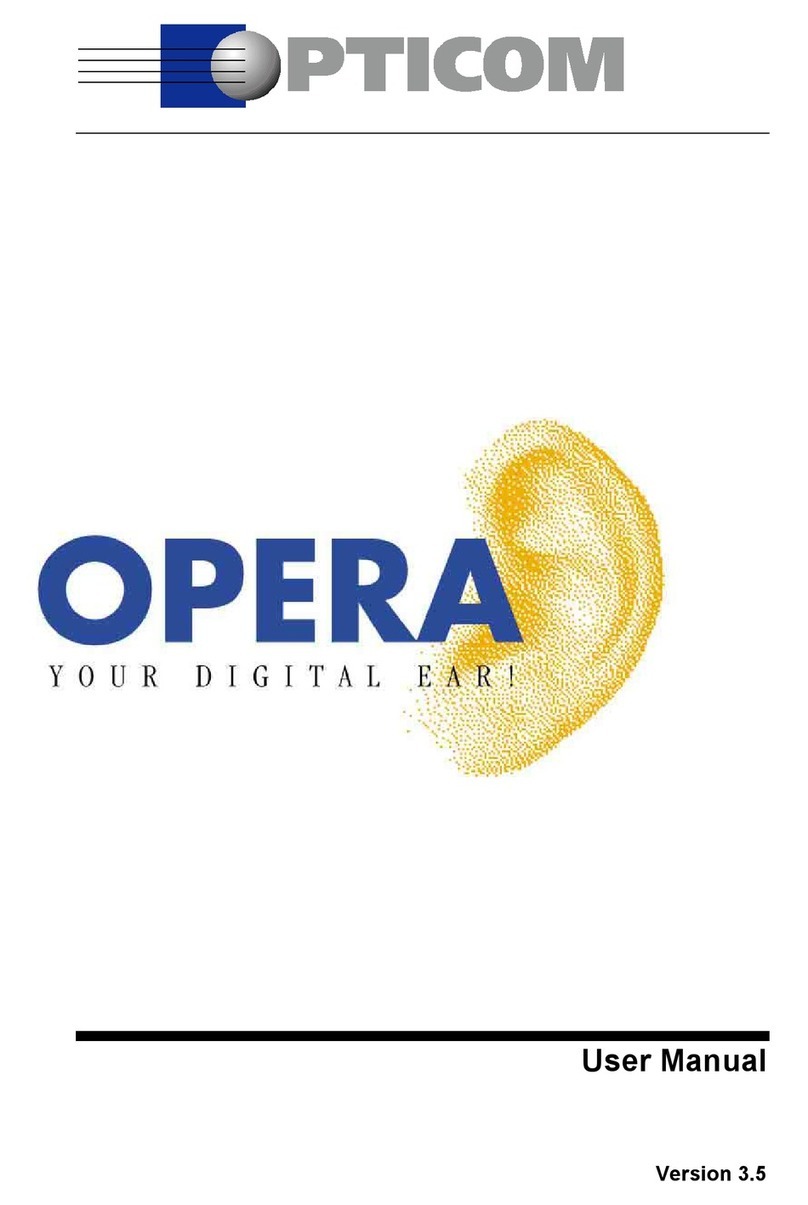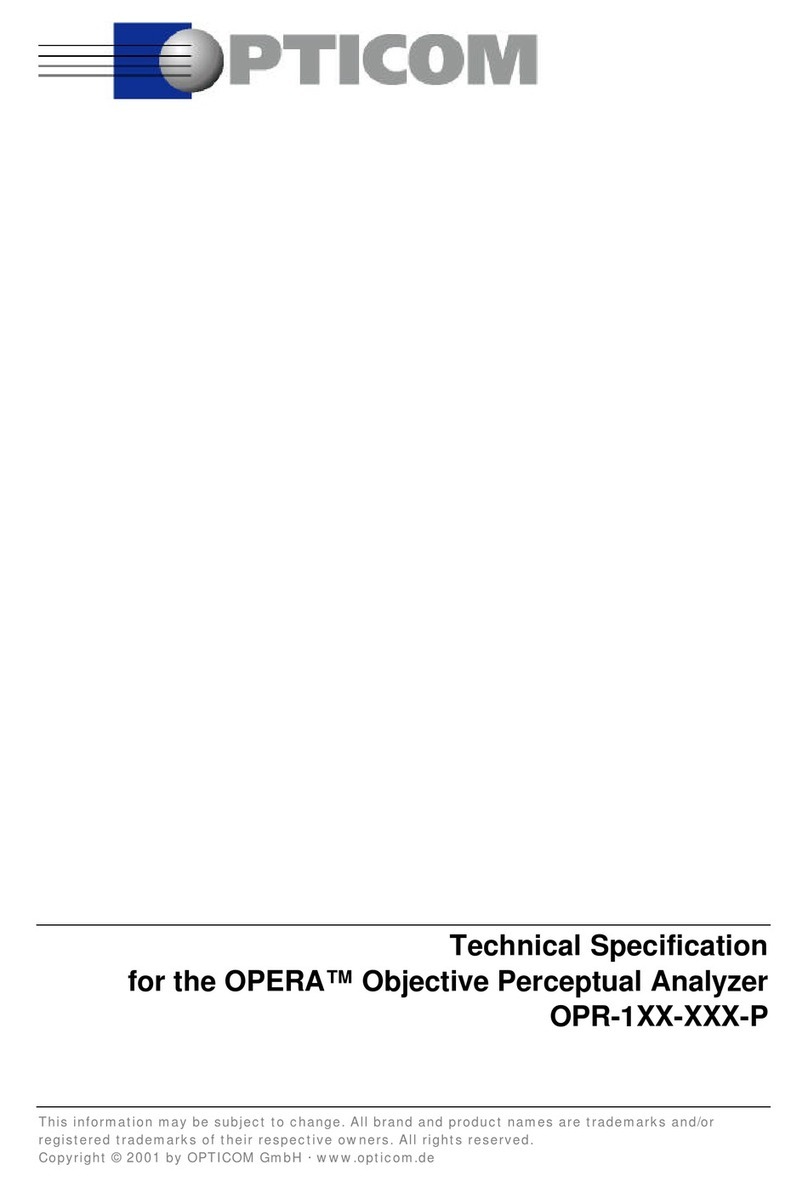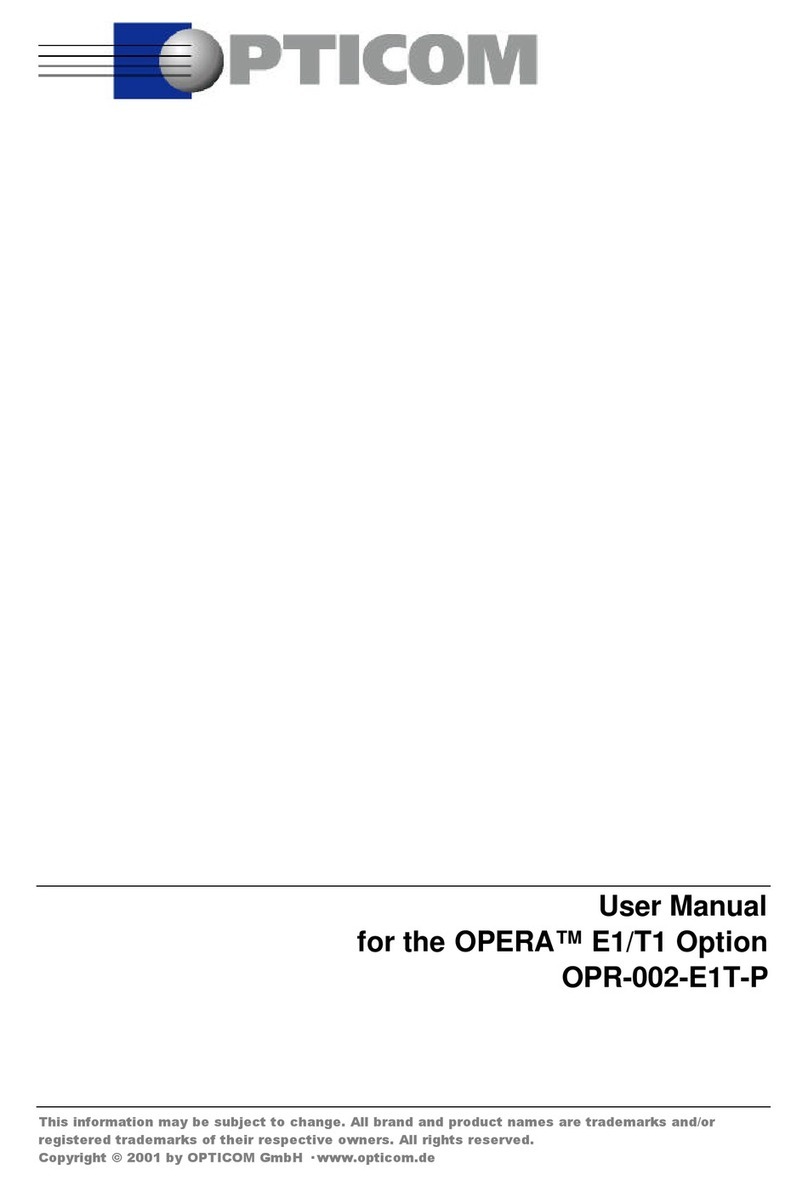Specifications
Functionality
• Perceptual Evaluation of Video Quality-
PEVQ, with mapping to MOS scale
(1 bad, … 5 excellent quality)
• Analysis of multimedia, SD and HD video
formats
Input
• Raw YUV, AVI Files with RGB24, YUV444,
YUV422 or YUV420 data, any frame rate from
2,5 up to 60 fps
• Video test sequences of 6 to 20 seconds
duration
In Cooperation with
DVC –
Digit lvideo Computing
GmbH
Seestraße 7
82211 Herrsching, Germany
Phone: +49-81 52 - 9 30 10
Fax: +49-81 52 - 9 13 31
www.digitalvideo.de
PEVQ - Perceptu l Ev lu tion of Video Qu lity
PEXQ™, 3SQM™, PEAQ™, PEVQ™, PEDQ™ and the OPTICOM logo are registered trademarks of OPTICOM GmbH; PESQ™ is a registered trademark of OPTICOM
GmbH and Psytechnics Ltd.; the 'Single-sided Speech Quality Measure' and 'The Perceptual Quality Experts' are trademarks of OPTICOM GmbH.
This information may be subject to change. All other brand and product names are trademarks and/or registered trademarks
of their respective owners. All rights reserved. Copyright © 2008 OPTICOM GmbH - www.opticom.de
Sales Contacts:
OPTICOM GmbH
Nägelsbachstraße 38
91052 Erlangen, GERMANY
Phone: +49-9131/53020-0
Fax: +49-9131/53020-20
www.opticom.de
North Americ :
Telchemy Inc.
Phone +1-770-614-6944
JDSU - Actern U.S.
Phone +1-301 353 1560 2850
Europe, L tin Americ ,
Middle E st & Afric ,
Asi P cific, CIS Countries:
JDSU - Actern
Germ ny GmbH
Phone: +49-7121 86 2222
Through our distributor net-
work, we are represented in
more than 80 countries. To find
your local sales office, please
contact info@opticom.de
OPTICOM GmbH
Nägelsbachstraße 38
91052 Erlangen, GERMANY
Phone: +49-9131/53020-0
Fax: +49-9131/53020-20
www.opticom.de
PVQ-101-000-D
• PEVQ Analyzer, Desktop Version
(DVC Boxxster)
• Single channel SD/HD SDI Interface for cap-
turing video (uncompressed reference video
play-out OR test record)
• Available with internal SATA-2-Storage 480
GB, 720 GB or 1200 GB (others on request)
PVQ-102-000-R
• PEVQ Analyzer, Rack-mountable Version
(DVC Cliprecorder AVX2)
• Dual channel SD/HD SDI Interface for cap-
turing video (uncompressed reference video
play-out AND test record)
PVQ-00X-XXX-S
• PEVQ Analyzer, Software-only Version
(for upgrade of existing DVC
Boxxster/Cliprecorder systems)
Optional available on re uest:
• Rack-mountable 1U breakout box incl.
SD/HD SDI I/O and analog/digital audio
• SD/HD SDI to DVI converter
• System flight-case (wheeled)
NOTE:
The PEVQ Analyzer comes with pre-configured
system installation, system documentation,
hard disk array as specified, break-out cables
for analog video and analog/digital audio
(Stereo), USB keyboard and mouse. The system
does NOT include a monitor as shown on the
first page.
Ordering Information
About OPTICOM
OPTICOM GmbH is the leading vendor for
voice, audio and video quality measurement
technology and OEM products for mobile and
IP based network testing. With PSQM, PESQ,
PEAQ and P.563, the pioneers in perceptual
quality testing have been providing by now
four international world-class standards for
voice and audio quality measurement since
the foundation of OPTICOM as a spin-off
from Fraunhofer’s MP3 development team in
1995.
After the great success with PESQ - the
International Standard for voice quality test-
ing, the experts from Germany now also
source PEVQ, the new industry standard to
measure a perceptual video quality KPI for
streaming, conferencing and messaging
applications.
PE Q, the next level of Perceptual Quality
Measurement, is the ideal ‘all-in-one’ test
suite for developers, manufacturers and
operators, while the ‘ ’ just symbolizes the
ongoing evolution of perceptual QoE metrics:
Based on PESQ, PEAQ, PEVQ and PEDQ the
software provides the most comprehensive
standards-based MOS-KPI set to score voice,
audio/visual and data quality as experienced
by subscribers. OPTICOM’s proven OEM
technology can be found in most state-of-
the-art products of leading T&M vendors,
see also www.opticom.de/company/cus-
tomers-licensing.html.
OPTICOM GmbH is a privately held company
located in Erlangen, Germany.




























